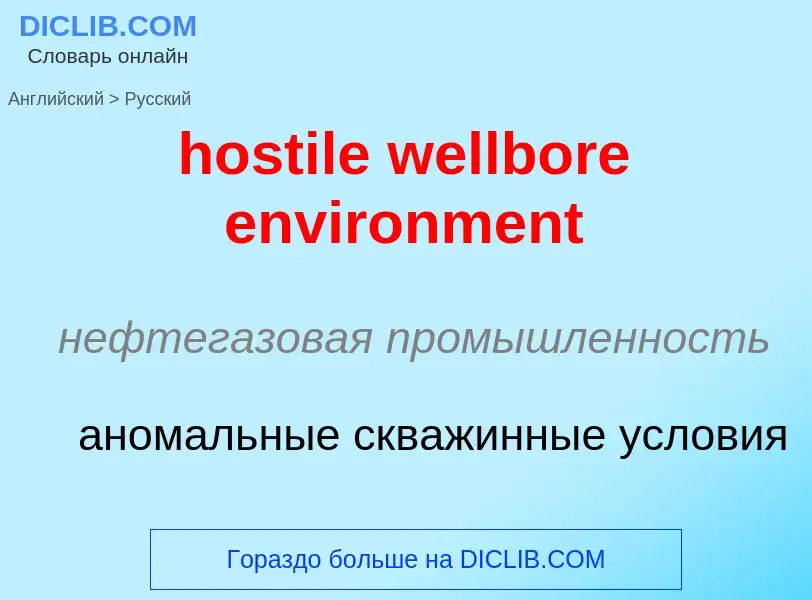Translation and analysis of words by ChatGPT artificial intelligence
On this page you can get a detailed analysis of a word or phrase, produced by the best artificial intelligence technology to date:
- how the word is used
- frequency of use
- it is used more often in oral or written speech
- word translation options
- usage examples (several phrases with translation)
- etymology
hostile wellbore environment - translation to russian
нефтегазовая промышленность
аномальные скважинные условия
Wikipedia
In United States labor law, a hostile work environment exists when one's behavior within a workplace creates an environment that is difficult or uncomfortable for another person to work in, due to illegal discrimination. Common complaints in sexual harassment lawsuits include fondling, suggestive remarks, sexually-suggestive photos displayed in the workplace, use of sexual language, or off-color jokes. Small matters, annoyances, and isolated incidents are usually not considered to be statutory violations of the discrimination laws. For a violation to impose liability, the conduct must create a work environment that would be intimidating, hostile, or offensive to a reasonable person. An employer can be held liable for failing to prevent these workplace conditions, unless it can prove that it attempted to prevent the harassment and that the employee failed to take advantage of existing harassment counter-measures or tools provided by the employer.
A hostile work environment may also be created when management acts in a manner designed to make an employee quit in retaliation for some action. For example, if an employee reported safety violations at work, was injured, attempted to join a union, or reported regulatory violations by management, and management's response was to harass and pressure the employee to quit. Employers have tried to force employees to quit by imposing unwarranted discipline, reducing hours, cutting wages, or transferring the complaining employee to a distant work location.
The United States Supreme Court stated in Oncale v. Sundowner Offshore Services, Inc. that Title VII is "not a general civility code". Thus, federal law does not prohibit simple teasing, offhand comments, or isolated incidents that are not extremely serious. Rather, the conduct must be so objectively offensive as to alter the conditions of the individual's employment. The conditions of employment are altered only if the harassment culminates in a tangible employment action or is sufficiently severe or pervasive.

